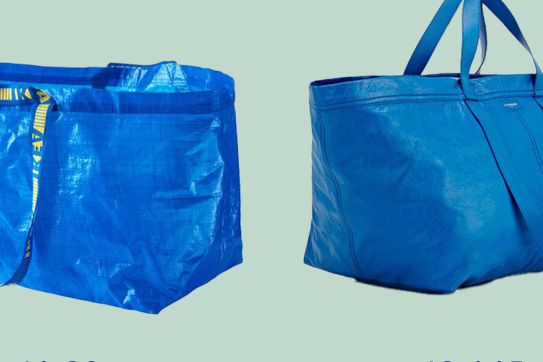If you see someone driving a luxury car or wearing a diamond watch that complements a custom-tailored suit, the message is clear: this person has money and they want you to know it.
But that same wealthy someone might also wear duct-taped sneakers while eating what looks to be a good, old-fashioned mac-and-cheese, and the communication of high status could be the same.
As Professor Silvia Bellezza demonstrates in a recently published paper, an increasing number of wealthy people are showing off their status by employing traditionally “downscale” styles.
“What we are seeing nowadays is the emergence of alternative ways in which high-status people signal they are well-off,” Bellezza says.
According to Bellezza, the Gantcher Associate Professor of Business, and co-writer Jonah Berger of the Wharton School, the progressive mass production of traditional luxury goods has made these once rare and unattainable luxury products more ubiquitous and accessible.
“Fifty years ago, it relatively was more difficult to get your hands on a luxury watch or luggage,” Bellezza says. “But now, if you have the money, you can get most of them.”
And if more people possess luxury items, it’s more difficult for the wealthy to distinguish themselves.
“The traditional types of signals don’t operate as efficiently as they did in the past,” Bellezza says.
Traditionally, status symbols and trends start among the upper echelons of society and then gain popularity when they trickle down to the culture at large. What Bellezza found is that some of these signals of wealth or refinement instead “trickle round,” from low culture to high culture, initially bypassing the mainstream. Bellezza’s research further demonstrates that some expensive trends take their cues from what is typically considered low culture in a way that functions as both a sign of wealth and a departure from everyday fashion and tastes.
“If you have a $2,000 bag that looks like an IKEA shopping bag or $900 shoes made of duct tape, those are luxury items,” Bellezza says. “There is no misunderstanding who is buying them.”
In one study inspired by the 1980s Italian board game Spin the Fashion Wheel, in which players create a unique look out of different kinds of clothes and accessories, the researchers found that compared with other groups, high-status individuals are more likely to pick downscale items and mix-and-match them with upscale items in a distinctive outfit.
Adopting lowbrow tastes or using downscale items is costly in the sense that it entails potential misidentification in the eyes of others. Bellezza notes that while high-status individuals can typically afford to do what they want without penalties because they feel secure in their social standing, those in other socioeconomic classes are more concerned about misidentification because their standing is less certain.
The researchers also find that high-status people opt to mix and match high and low items to ensure their signals are clear, noting actress Sarah Jessica Parker’s penchant for wearing a jacket purchased at a flea market with a pair of Manolo Blahnik shoes or the zip-up bomber jacket paired with a platinum, ruby, and diamond Cartier brooch worn by Timothée Chalamet on the red carpet at the Academy Awards.
Citing concerns over staying relevant in the marketplace, luxury brands such as Prada and Gucci have offered high-end versions of common clothes such as slide-on sandals and legwarmers.
Bellezza notes that these brands use downscale items and style flourishes to challenge established notions of beauty and good taste.
This mixing and matching is also common in many fields of consumption, such as cuisine.
“There are chefs who take high-end delicacies such as foie gras and combine it with burgers, a very ordinary dish,” Bellezza says. “It’s a very sophisticated type of item. It takes knowledge and cultural capital to conceive of a dish like that.”
The paper also cites another study which asked a sample of wealthy respondents to choose a menu from four different “classes” of cuisine for a dinner party. Those surveyed were given the option of a highbrow menu with a selection of caviar and lobster tails; a mixed menu featuring truffle mac and cheese along with crab tater tots; a middlebrow menu with fettuccini Alfredo and a Caesar salad; and a lowbrow one with corn dogs and onion rings.
Not only did the subjects prefer the mixed menu, but they were driven to choose it out of a desire for distinction.
Bellezza says that products that take advantage of these so-called trickle round signals tend to apply to a very niche market, but one that is, nevertheless, important and gaining momentum in the marketplace.
“I don’t expect Prada or Louis Vuitton will only start offering goods that mix high and low,” she says. “But if brands want to stay relevant it could be a way to keep high- status people engaged.”
